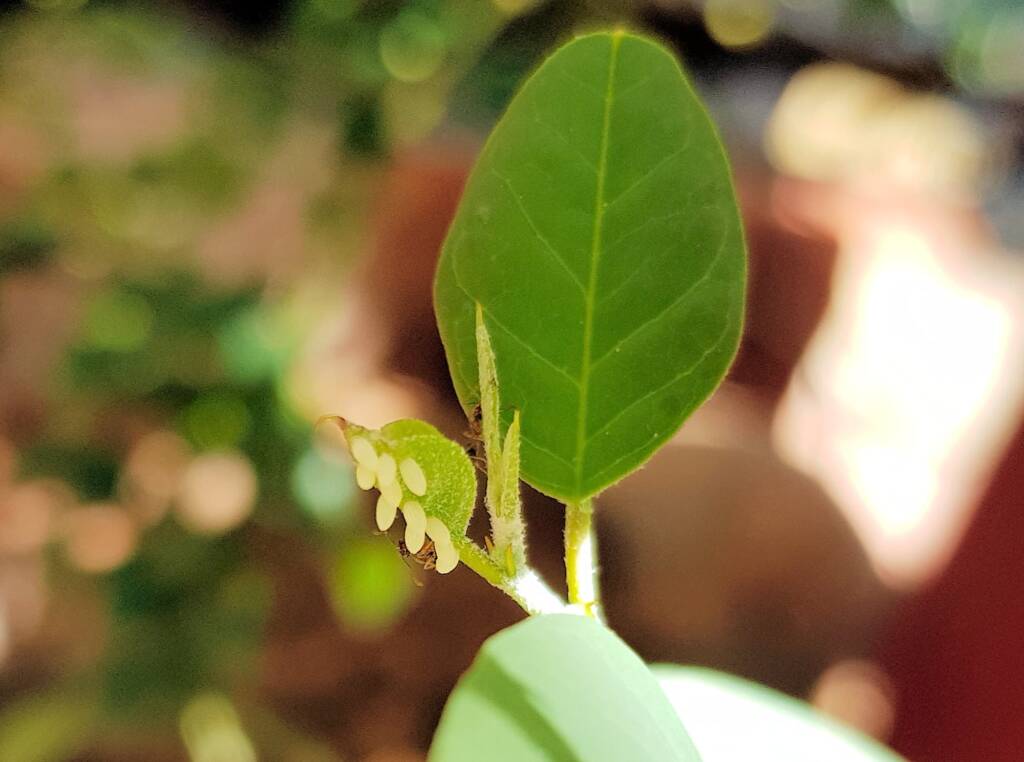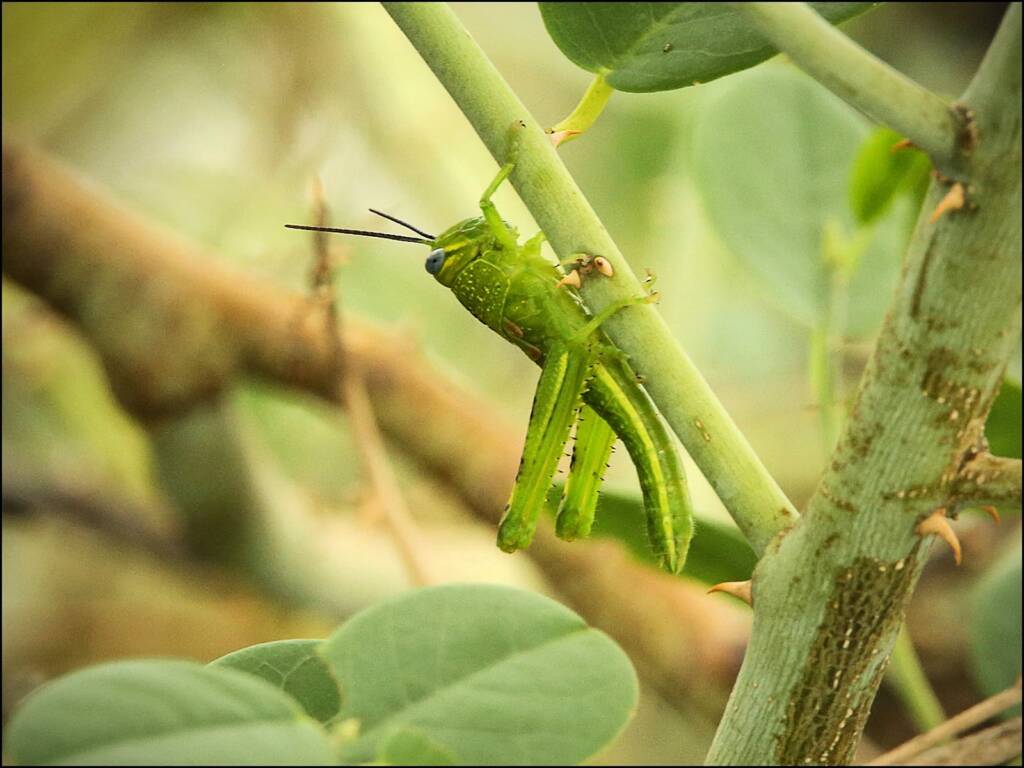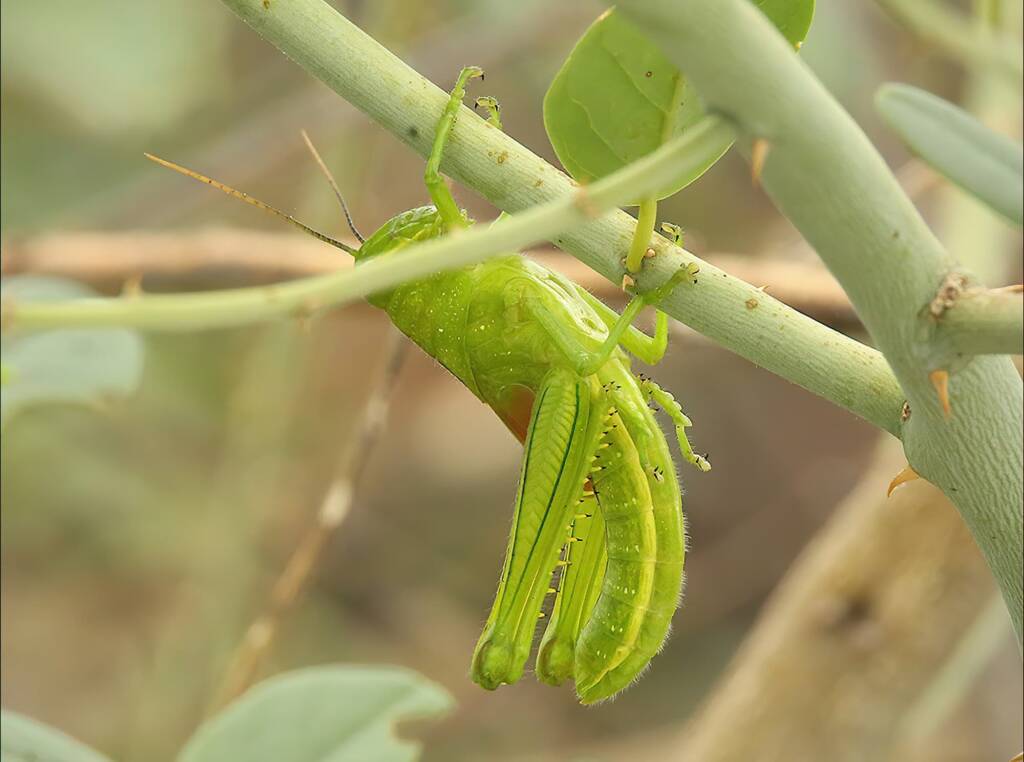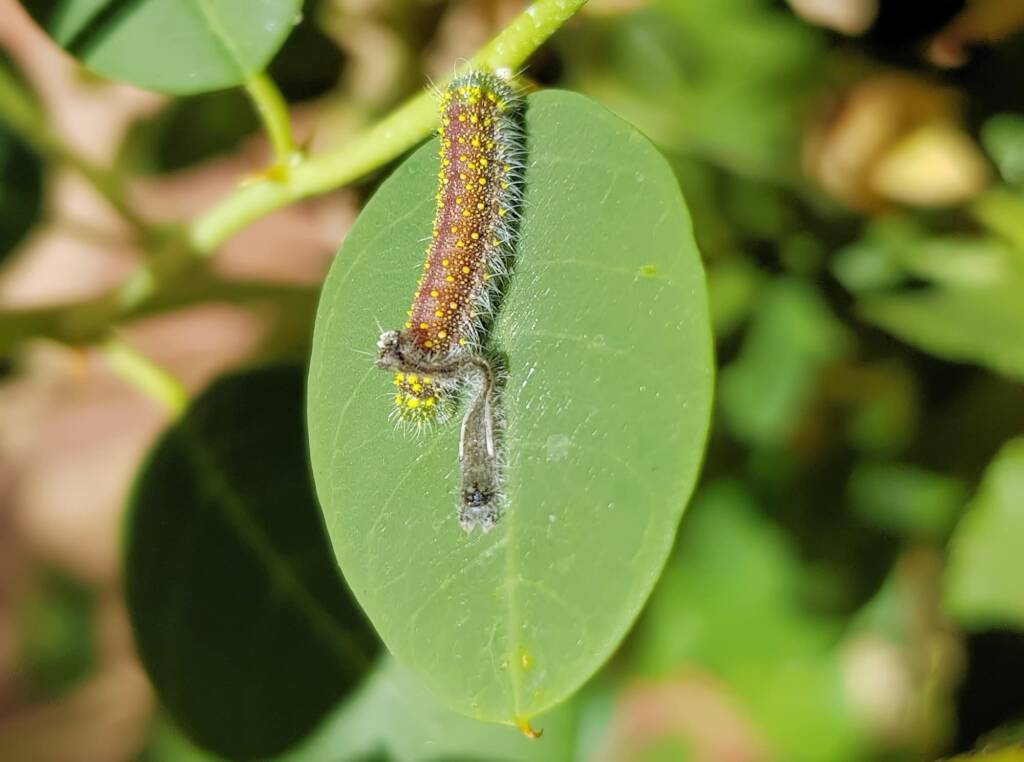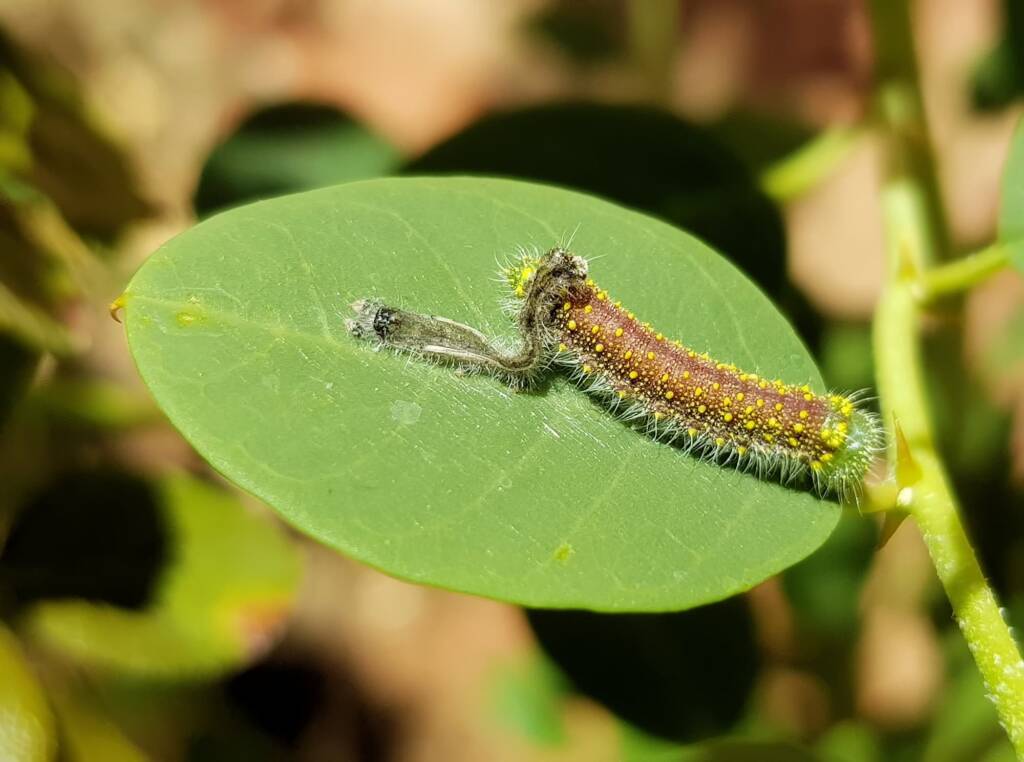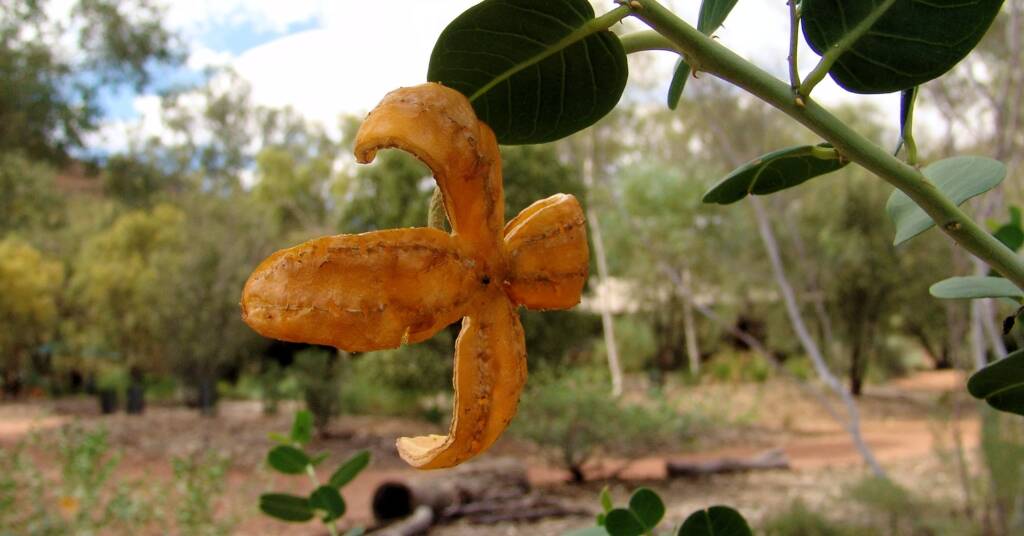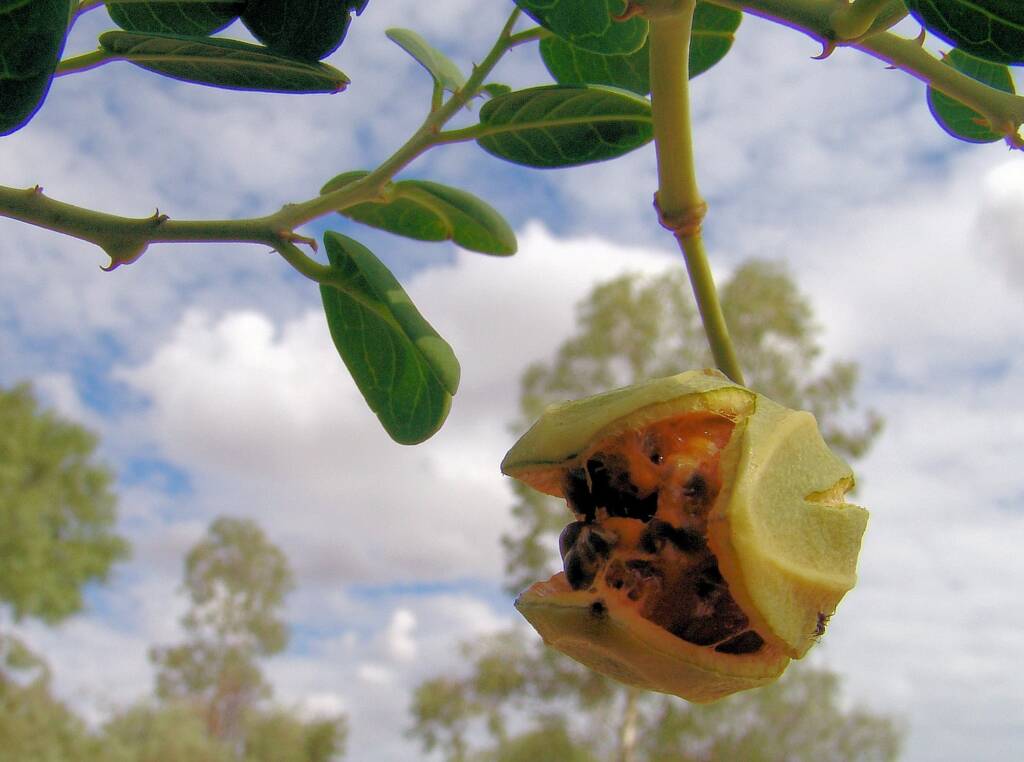Wild PassionfruitInsects of the Wild Passionfruit
The Wild Passionfruit (also commonly known as the Caper Bush), includes the Capparis spinosa var. nummularia, and as well as being a popular bush food for humans, is also enjoyed by a range of creatures including insects.
A number of insects have been seen on the caper bush, whether they were just resting, looking for other insects as food, or actually eating the caper bush itself (some insects eating the leaves or fruit, whilst others consume the pollen or nectar).
There are two insects that are often seen on the caper bush, one being black ants, especially when the fruit is ripe.

In the following images, we had observed some brown ants appearing to be surveying the eggs of the Caper White Butterfly (Belenois java teutonia) that had been laid on the caper bush.
An insect you will often see flying around the caper bush, sometimes in large numbers, and being the preferred plant, is the Caper White Butterfly (Belenois java teutonia). In particular they like to lay their eggs on the plant, as it provides food for their caterpillars.

You may occasionally see male butterflies of the species, trying to mate with the female on the caper bush. This often happens, as the males hang around the chrysalis for the new females to emerge, as seen here.
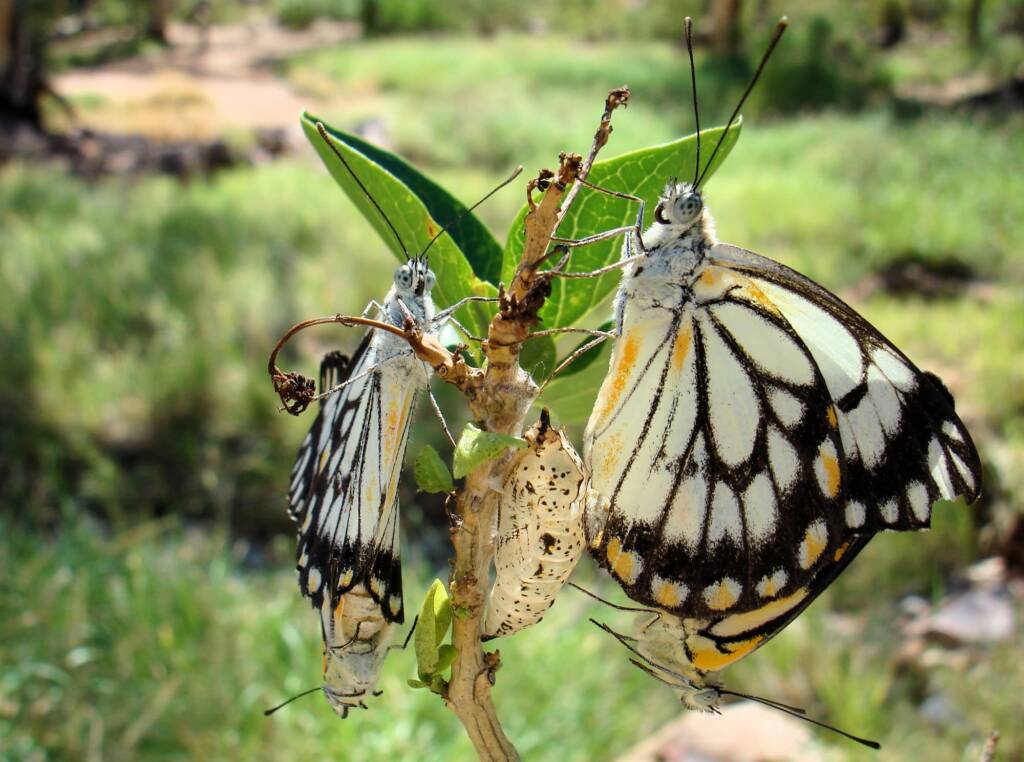
The eggs of the Caper White Butterfly are a cream white colour when they are first laid. This changes to a yellow yolk colour as the egg matures, from which the first instar of the caterpillar emerges.


In the following image a blow fly appears to be checking out the eggs of the Caper White Butterfly (Belenois java teutonia) on the Caper Bush (Capparis spinosa var. nummularia).

A variety of flies species appear to enjoy being on the caper bush, from the fruit fly to the blow flies. The following is thought to be a fruit fly belonging to the family Tephritidae. It has been suggested that the species is the Bull Thistle Gall Fly (Urophora stylata).

With about 30,000 species of flies, the majority of flies are good. Although we know some flies are bad. They are of course important to the ecosystem, with many fly species being decomposers of organic and dead organic matter. Flies also are food for many other living creatures such as spiders.

The blow flies here appear to be enjoying the caper fruit. It is suggested these flies belong to the genus Chrysomya.

Following is a Giant Grasshopper nymph (Valanga irregularis). 1st and 2nd photos show it is on the Caper Bush (Capparis spinosa var. nummularia). 3rd photo for further ID clarification.
An interesting evolution is to see the different instar stages that the caterpillar moults through.

It is amazing sometimes to witness that the Caper White Butterflies favour one bush over another bush of the same species. We have seen two caper bush in close proximity of each other, yet the Caper White seem to prefer one bush over another. This often includes laying of multiple generation of eggs (whether by the same butterfly or other butterflies of the species).


Following you can see the moulting between the instar stage of the Caper White caterpillar.
The following photo, you can just see the face moult as it drops away from the top of the Caper White caterpillar (instar) and the rest of the skin at the tail end.

Instar of the Caper White Butterfly on the shell husk of the fruit of the Caper Bush (Capparis spinosa var. nummularia).
Here you can see a praying mantis ootheca on the caper bush, along with the instars of the Caper White Butterfly.

The caterpillars go through their instar stages, before the final stage of the pupa / chrysalis, then finally emerging as the butterfly.
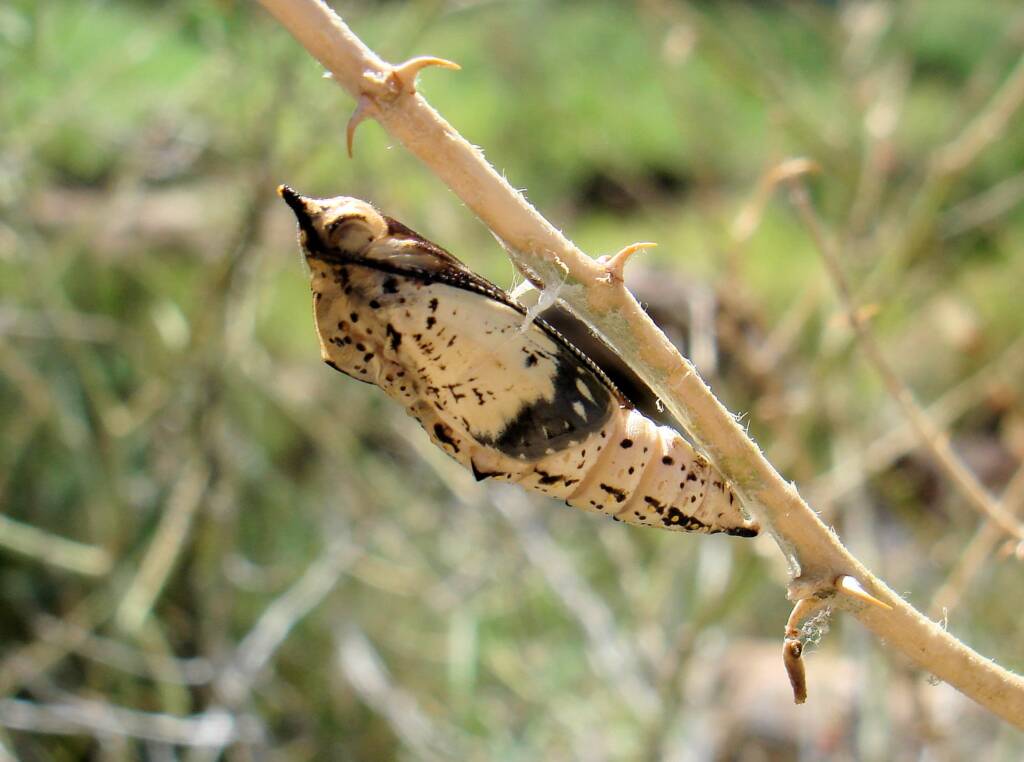

Sadly not all Caper White butterflies are successful in their metamorphosis, with this one dead, half emerged in the chrysalis.
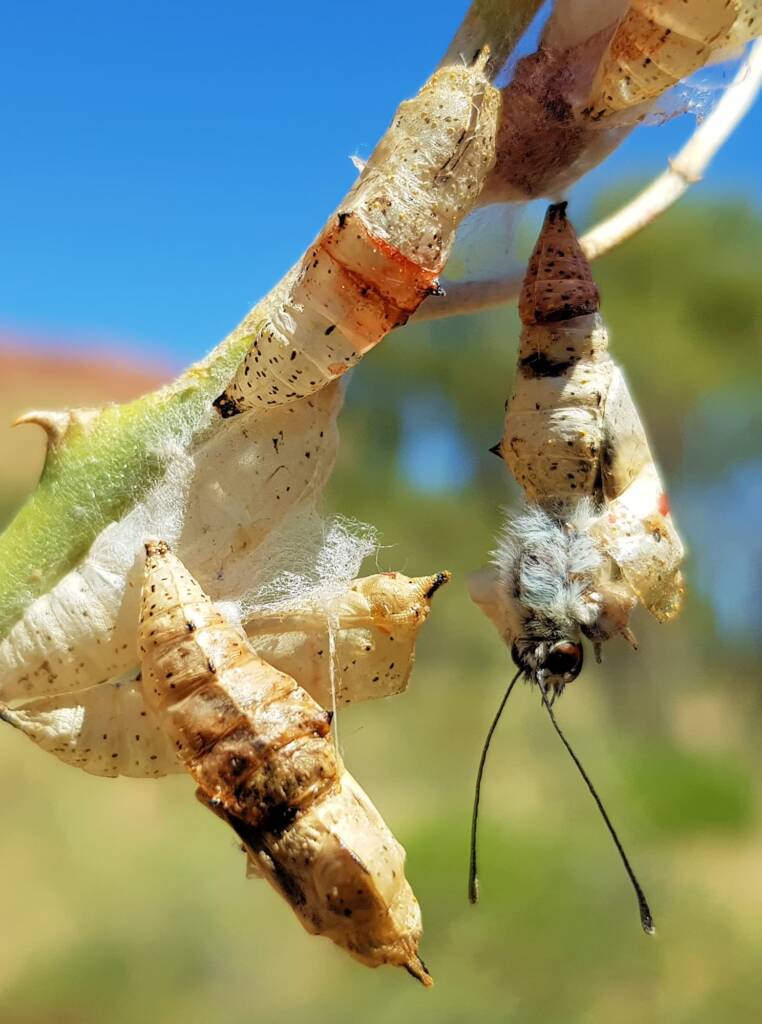
Whilst an mature bush can usually survive the first generation of caterpillars, it is when there are subsequent generations that hatch from more eggs laid by other Caper White Butterflies, that sometimes may result in the death of the plant.
The following photo depicted the caterpillars, instars and the cases of the species Belenois java teutonia on a Caper Bush (Capparis spinosa var. nummularia) having eaten most of the leaves.
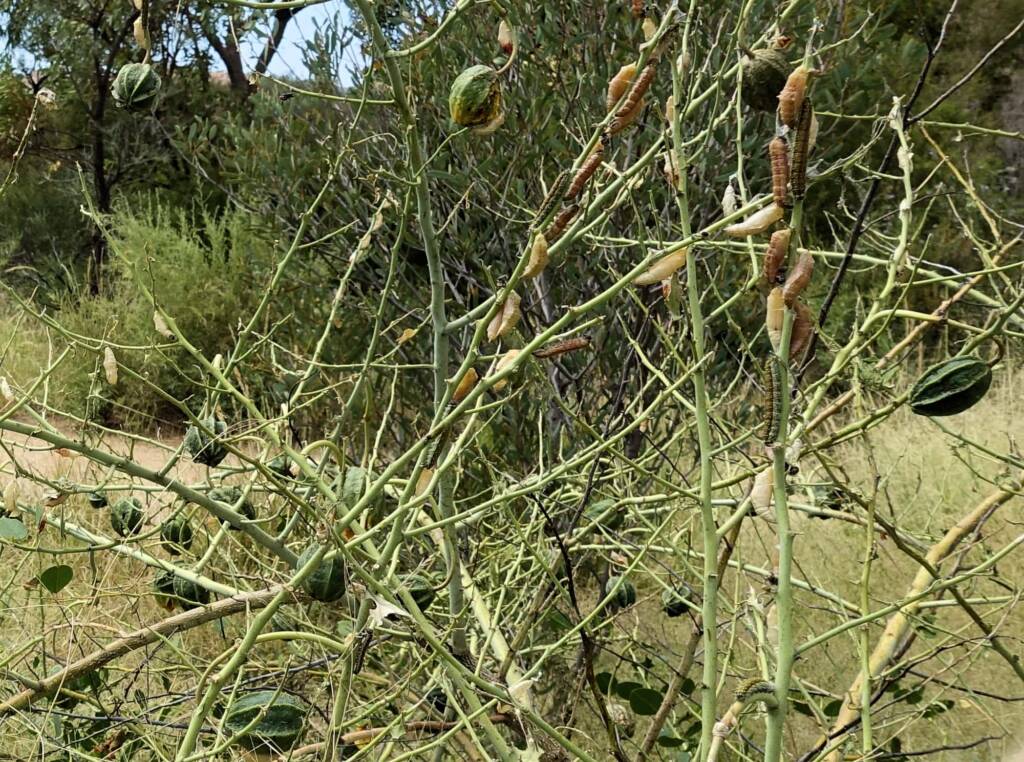
- Scientific classification
- Kingdom: Animalia
- Phylum: Arthropoda
- Class: Insecta
- Order: Lepidoptera
- Family: Pieridae
- Genus: Belenois
- Species: Belenois java
- Subspecies: Belenois java teutonia
- Scientific classification
- Kingdom: Animalia
- Phylum: Arthropoda
- Class: Insecta
- Order: Diptera
- Section: Schizophora
- Subsection: Acalyptratae
- Superfamily: Tephritoidea
- Family: Tephritidae
- Subfamily: Tephritinae
- Tribe: Myopitini
- Genus: Urophora
- Species: Urophora stylata
- Scientific classification
- Kingdom: Animalia
- Phylum: Arthropoda
- Class: Insecta
- Order: Diptera
- Family: Calliphoridae
- Subfamily: Chrysomyinae
- Genus: Chrysomya

Footnote & References
- Photos contribution by Jan Martin.
- Photo contribution by Jacqueline Arnold
- Thanks for ID by members of Australia – What Bug Is This? Facebook group, https://www.facebook.com/groups/Auswhatbugisthis/
Wild PassionfruitInsects of the Wild Passionfruit
FloraFlora in Australia Flora Index Acacia Anigozanthos (Kangaroo Paws) Annual Yellowtop Apium prostratum subsp. prostratum var filiforme Apple Bush (Pterocaulon sphacelatum) Australian Bluebell Australian Gossypium Banksia Batswing Coral Tree Billy Buttons Birdsville Indigo Blue Pincushion Bush Banana Callistemon Callitris drummondii (Drummond’s Cypress Pine) Calothamnus quadrifidus Cape Honeysuckle Cassia fistula (Golden Shower) Cattle Bush Common Heath Crotalaria Darwinia wittwerorum (Wittwer’s Mountain Bell) Daviesia oppositifolia (Rattle-pea) Desert Oaks Drumsticks Eremophila Eucalyptus Ficus Flannel Cudweed (Actinobole uliginosum) Georges Indigo Goatshead Burr (Sclerolaena bicornis) Golden Everlasting Goodenia Gossypium Grass and Grasses Grass Trees Grevillea Grey Germander Hakea Kapok Bush (Aerva javanica) Lambertia sp Leptospermum MacDonnell Ranges Cycad Maireana scleroptera Mexican Poppy Minnie Daisy Mistletoe Family Nardoo Native Apricot Nicotiana megalosiphon subspecies sessilifolia Nuytsia floribunda Orange Spade Flower Orchidaceae Parakeelyas (Calandrinia) Pebble Bush (Stylobasium spathulatum) Perennial Yellow Top Pink Everlasting Pink Rock Wort Poached Egg Daisy Portulaca Proteaceae Ptilotus Quandong Resurrection Fern Rosy Dock Ruby Saltbush Santalum Solanum Spike Centaury Spinifex Storkbill (Erodum cygnorum) Striped Mint Bush Sturt’s Desert Pea Sturt’s Desert Rose Tall Saltbush Tangled Leschenaultia Tar Vine Tribulus eichlerianus Upside-down Plant Urodon dasyphylla Variable Daisy Waratah (Telopea) Wertabona Daisy White Cedar (Melia azedarach) White Indigo White Paper Daisy Wild Passionfruit Wild Stock Woolly-Headed Burr Daisy Woolly Bush Yellow-keeled Swainsona




